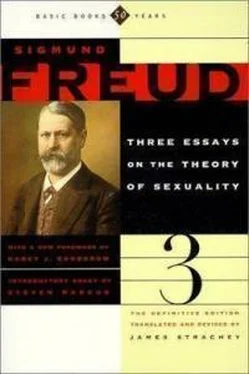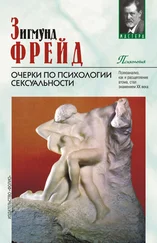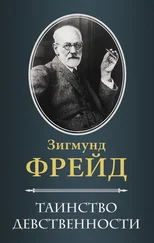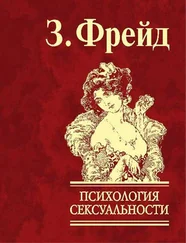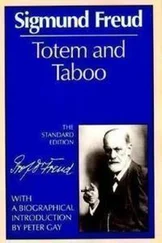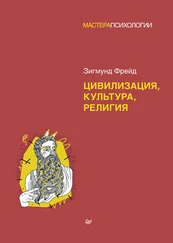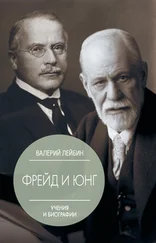*Explanation of Inversion.*—The nature of inversion is explained neither by the assumption that it is congenital nor that it is acquired. In the first case, we need to be told what there is in it of the congenital, unless we are satisfied with the roughest explanation, namely, that a person brings along a congenital sexual impulse connected with a definite sexual object. In the second case it is a question whether the manifold accidental influences suffice to explain the acquisition unless there is something in the individual to meet them half way. The negation of this last factor is inadmissible according to our former conclusions.
*The Relation of Bisexuality.*—Since the time of Frank Lydston, Kiernan, and Chevalier, a new series of ideas has been introduced for the explanation of the possibility of sexual inversion. This contains a new contradiction to the popular belief which assumes that a human being is either a man or a woman. Science shows cases in which the sexual characteristics appear blurred and thus the sexual distinction is made difficult, especially on an anatomical basis. The genitals of such persons unite the male and female characteristics (hermaphroditism). In rare cases both parts of the sexual apparatus are well developed (true hermaphroditism), but usually both are stunted. [14] Compare the last detailed discussion of somatic hermaphroditism (Taruffi, Hermaphroditismus und Zeugungsunfähigkeit, German edit. by R. Teuscher, 1903), and the works of Neugebauer in many volumes of the Jahrbuch für sexuelle Zwischenstufen.
The importance of these abnormalities lies in the fact that they unexpectedly facilitate the understanding of the normal formation. A certain degree of anatomical hermaphroditism really belongs to the normal. In no normally formed male or female are traces of the apparatus of the other sex lacking; these either continue functionless as rudimentary organs, or they are transformed for the purpose of assuming other functions.
The conception which we gather from this long known anatomical fact is the original predisposition to bisexuality, which in the course of development has changed to monosexuality, leaving slight remnants of the stunted sex.
It was natural to transfer this conception to the psychic sphere and to conceive the inversion in its aberrations as an expression of psychic hermaphroditism. In order to bring the question to a decision, it was only necessary to have one other circumstance, viz., a regular concurrence of the inversion with the psychic and somatic signs of hermaphroditism.
But this second expectation was not realized. The relations between the assumed psychical and the demonstrable anatomical androgyny should never be conceived as being so close. There is frequently found in the inverted a diminution of the sexual impulse (H. Ellis) and a slight anatomical stunting of the organs. This, however, is found frequently but by no means regularly or preponderately. Thus we must recognize that inversion and somatic hermaphroditism are totally independent of each other.
Great importance has also been attached to the so–called secondary and tertiary sex characters and their aggregate occurrence in the inverted has been emphasized (H. Ellis). There is much truth in this but it should not be forgotten that the secondary and tertiary sex characteristics very frequently manifest themselves in the other sex, thus indicating androgyny without, however, involving changes in the sexual object in the sense of an inversion.
Psychic hermaphroditism would gain in substantiality if parallel with the inversion of the sexual object there should be at least a change in the other psychic qualities, such as in the impulses and distinguishing traits characteristic of the other sex. But such inversion of character can be expected with some regularity only in inverted women; in men the most perfect psychic manliness may be united with the inversion. If one firmly adheres to the hypothesis of a psychic hermaphroditism, one must add that in certain spheres its manifestations allow the recognition of only a very slight contrary determination. The same also holds true in the somatic androgyny. According to Halban, the appearance of individual stunted organs and secondary sex characters are quite independent of each other. [15] J. Halban, "Die Entstehung der Geschlechtscharaktere," Arch. für Gynäkologie, Bd. 70, 1903. See also there the literature on the subject.
A spokesman of the masculine inverts stated the bisexual theory in its crudest form in the following words: "It is a female brain in a male body." But we do not know the characteristics of a "female brain." The substitution of the anatomical for the psychological is as frivolous as it is unjustified. The tentative explanation by v. Krafft–Ebing seems to be more precisely formulated than that of Ulrich but does not essentially differ from it. v. Krafft–Ebing thinks that the bisexual predisposition gives to the individual male and female brain centers as well as somatic sexual organs. These centers develop first towards puberty mostly under the influence of the independent sex glands. We can, however, say the same of the male and female "centers" as of the male and female brains; and, moreover, we do not even know whether we can assume for the sexual functions separate brain locations ("centers") such as we may assume for language.
After this discussion, two notions, at all events, persist; first, that a bisexual predisposition is to be presumed for the inversion also, only we do not know of what it consists beyond the anatomical formations; and, second, that we are dealing with disturbances which are experienced by the sexual impulse during its development. [16]
*The Sexual Object of Inverts.*—The theory of psychic hermaphroditism presupposed that the sexual object of the inverted is the reverse of the normal. The inverted man, like the woman, succumbs to the charms emanating from manly qualities of body and mind; he feels himself like a woman and seeks a man.
But however true this may be for a great number of inverts, it by no means indicates the general character of inversion. There is no doubt that a great part of the male inverted have retained the psychic character of virility, that proportionately they show but little of the secondary characters of the other sex, and that they really look for real feminine psychic features in their sexual object. If that were not so it would be incomprehensible why masculine prostitution, in offering itself to inverts, copies in all its exterior, to–day as in antiquity, the dress and attitudes of woman. This imitation would otherwise be an insult to the ideal of the inverts. Among the Greeks, where the most manly men were found among inverts, it is quite obvious that it was not the masculine character of the boy which kindled the love of man, but it was his physical resemblance to woman as well as his feminine psychic qualities, such as shyness, demureness, and the need of instruction and help. As soon as the boy himself became a man he ceased to be a sexual object for men and in turn became a lover of boys. The sexual object in this case as in many others is therefore not of the like sex, but it unites both sex characters, a compromise between the impulses striving for the man and for the woman, but firmly conditioned by the masculinity of body (the genitals). [17]
The conditions in the woman are more definite; here the active inverts, with special frequency, show the somatic and psychic characters of man and desire femininity in their sexual object; though even here greater variation will be found on more intimate investigation.
*The Sexual Aim of Inverts.*—The important fact to bear in mind is that no uniformity of the sexual aim can be attributed to inversion. Intercourse per anum in men by no means goes with inversion; masturbation is just as frequently the exclusive aim; and the limitation of the sexual aim to mere effusion of feelings is here even more frequent than in hetero–sexual love. In women, too, the sexual aims of the inverted are manifold, among which contact with the mucous membrane of the mouth seems to be preferred.
Читать дальше
